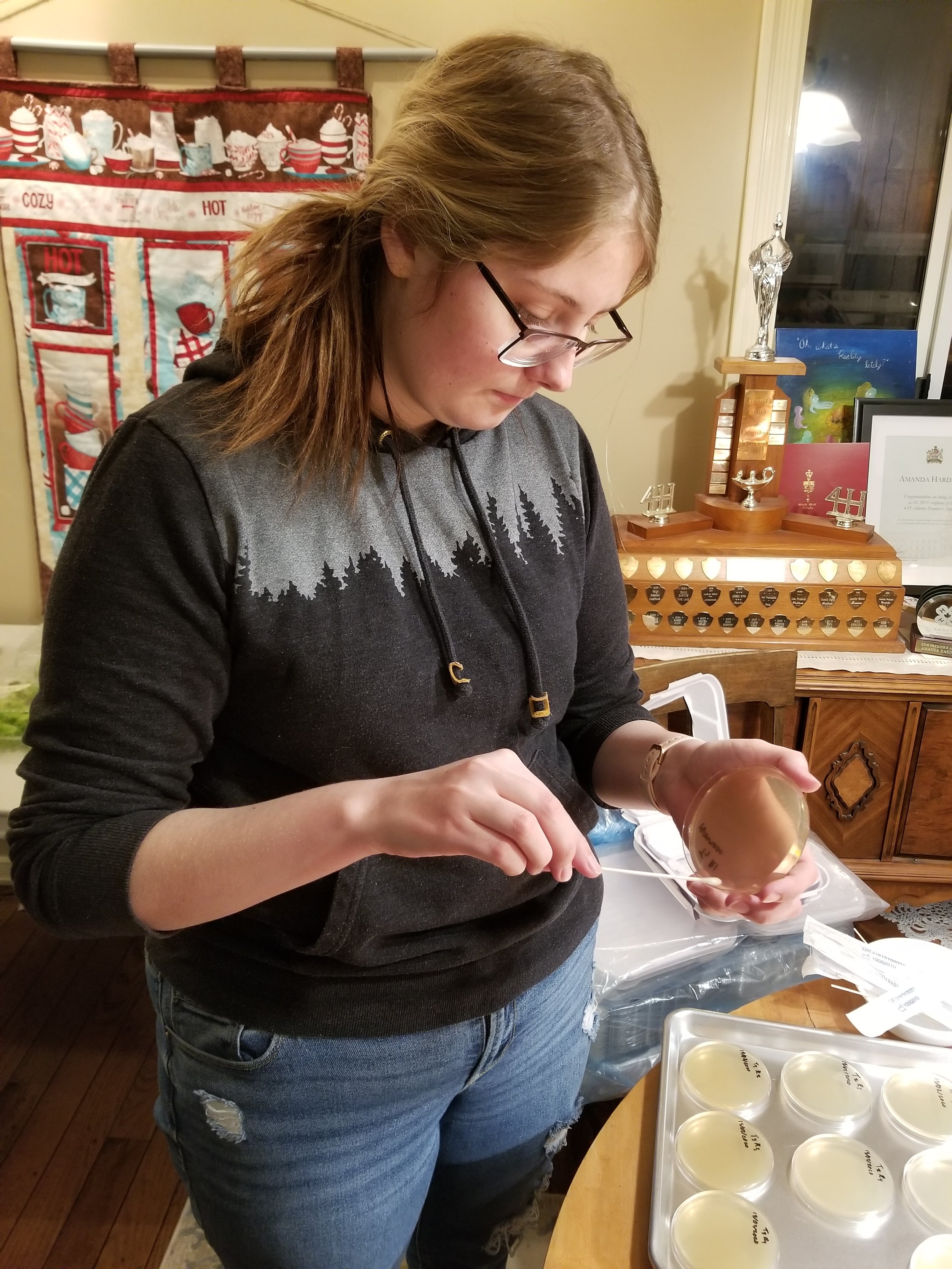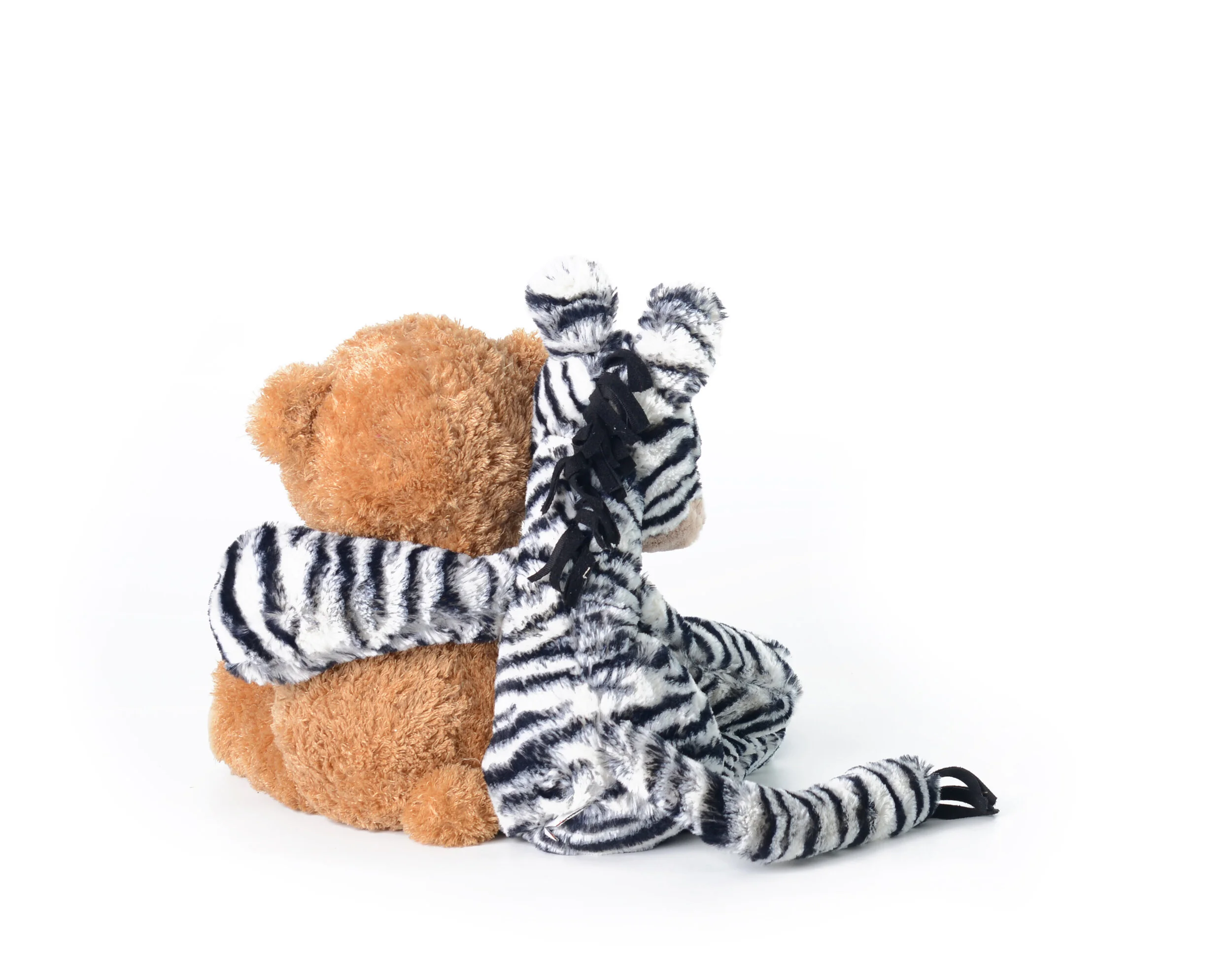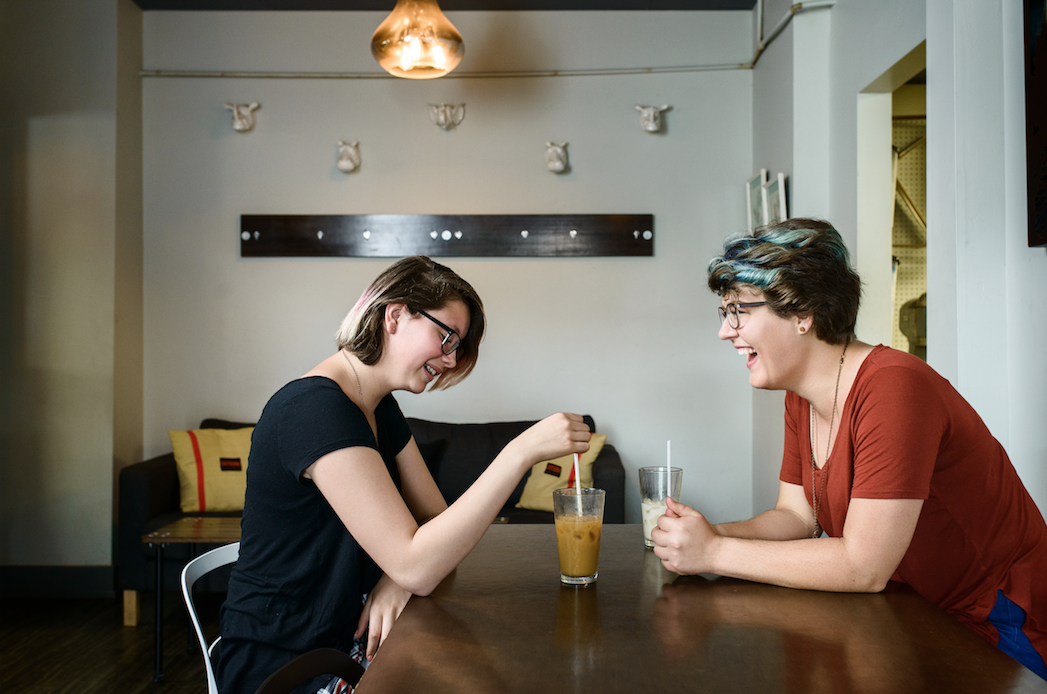Meet Food Packaging Change Maker, U of A's Amanda Hardman.
We are excited to feature students in our community thriving and making an impact that direct effects the way we all live our daily lives. Thank you to Amanda Hardman on being our first guest and our student intern, Mohamed Warsame for leading this project for us.
Interviewed by Mohamed Warsame, VFC Student Intern from Edmonton, AB
Hello and welcome to YBB Connect’s Student Feature. My name is Mohamed Warsame and today we are speaking with Amanda Hardman. She is a second-year sustainable agriculture student at the University of Alberta. Amanda has developed a biodegradable lettuce packaging prototype. This clamshell package was made from sugarcane fibre and was designed to be more sustainable and produce less waste.
Q1. What made you interested in sustainable packaging?
I was looking to do a science fair project for my grade 12 year, and I was having a hard time deciding on a project topic. I was really interested in putting new use to waste products or underutilized products. I was also very interested in Tentree and how they use algae to create padding for their sports bags, recycled bottles for their clothing, etc. I was trying to think of a way to incorporate those two aspects into a project focused on sustainable agriculture, and after some research, I landed on using cellulose nanocrystals for food packaging!
Q2. How did you acquire the resources needed to make the clamshell package? What were the costs associated?
I was able to find someone at Alberta Innovates in Edmonton to help me acquire liquid cellulose nanocrystals. I bought a 50 pack of bagasse (sugar cane) fiber to-go boxes to use as a substrate for the liquid cellulose. The people at Alberta Innovates were nice enough to spray the crystals on the boxes for me, so I only had to worry about purchasing the boxes!
Q3. What was it like speaking at the Ag Summit? Was it your first public speaking event?
Due to the size and format of the event, participants didn’t have the chance to speak at the event. Because of the current pandemic, we participated in the summit via an online livestream over the course of two days. They had some fantastic speakers from various backgrounds to share their experiences in leadership and agriculture. It was very interesting to hear about their work and their experiences.
Q4. What steps do you think are needed to make your product ready to be marketed?
I would need to work on the design of the packaging. I only had two months to experiment on the proof-of-concept, so the aesthetic of the boxes has a long way to go. I also want to see if I can make the packaging more effective for perishable food storage.
Q5. Can you share any memorable experiences that happened at the Youth Ag Summit?
Hearing about global agricultural issues was super interesting to me! I often hear about Albertan or Canadian agricultural issues, so being able to hear about problems that I don’t normally consider was a welcome change.
Q6. Have you been approached by any NGOs about your product? If so, have you collaborated with any of them?
Besides receiving help with my science fair project with Alberta Innovates, I was approached in my grade 12 year to participate in the BEST Lassonde STEM Bootcamp in collaboration with Youth Science Canada. The three-day program was focused on moving our projects from a science fair project to a more business-focused project. It was a very fun experience to meet other innovators from across Canada and to learn more about STEM business development!
Q7. Can you explain further why you think your product would not work in some countries as intended?
In less consumer-heavy countries, this packaging would be less useful. This packaging was made with countries like Canada, the U.S. and the E.U. in mind, where consumer supply chains are such a big part of how we live. In countries where this is less prevalent, there would be less of a need for this type of packaging.
Q8. What’s next for Amanda Hardman? Are you working on any new projects?
Besides getting my degree, I’m not sure what’s next on the horizon! I know I’ll continue to work in sustainable agriculture, but who’s to say where I’ll end up!
We are excited to feature students in our community thriving and making an impact that direct effects the way we all live our daily lives. Thank you to Amanda Hardman on being our first guest and our student intern, Mohamed Warsame for leading this project for us. - YBB Co-Founders
Improving Your Child's Mental Health & Emotional Well-Being
Parents play an important role in the healthy development of their children. In today’s world, there is a big focus on mental health and supporting children to boost their self-esteem and self-confidence, but the amount of information at our fingertips can be very overwhelming.
Tips to Help Improve your Child’s Mental Health & Emotional Well-Being
Parents play an important role in the healthy development of their children. In today’s world, there is a big focus on mental health and supporting children to boost their self-esteem and self-confidence, but the amount of information at our fingertips can be very overwhelming. The Zebra Centre has put together a few tips for parents to help identify when their child may be struggling, respond to their child’s behaviour and promote their child’s emotional well-being.
How can I tell if my child is struggling?
Many children who are struggling will express themselves with behaviours that are different from their “normal”. Some of these behaviour changes could look like:
Negative talk about themselves, blaming themselves for things beyond their control
Difficulty concentrating
Increased feelings of worry, guilt, fear, irritability, sadness, anger, helplessness, loneliness and rejection
Loss of interest in activities they enjoy
Changes in school performance
Overreacting or sudden outbursts of anger or tears
Changes in appetite and sleep patterns
Difficulty relaxing and sleeping
Every child is different and will express themselves in a different way. As parents, it is important to pay attention to your child’s behaviour. When you notice a change, talk to you children about what might be going on instead of reacting to the behaviour. This will help yourself and your child separate their feelings from their behaviour. These conversations can help teach children to work through their negative feelings and problem solve in the future. As one article states, “Feelings are like important road signs if we understand them and listen to them, they can teach us where to go next and what to look for,” (7 tips to improve your child’s mental health and emotional well-being).
How do I start building healthy emotional well-being?
Whether you believe it or not, you have a lot of power in helping your child develop healthy emotional well-being as a parent. Here are a few tips that you can incorporate into your parenting routine:
Encourage, don’t discourage
As a parent, it is likely that you have a vision of what you would like your child’s future to be. However, this vision may be different from what your child wants for themselves. It is important to encourage your child to be true to themselves, even if it is different from what you had hoped for. Pay attention to your child’s interests and allow them to try new things. Your child’s journey is complex and it is important to empower your child to make decisions and explore who they are. As a parent, your unconditional acceptance means a lot to your child.
Provide an emotionally and physically safe place for your child to grow
Creating a place where your child feels safe emotionally and physically is important. Disciplining with respect and not shame, normalizing feelings by talking about them, and demonstrating patience are a few strategies to consider. In today’s world, parents should set healthy boundaries with children, especially around internet safety. Explaining why a boundary is in place and including your child in the decision-making process can demonstrate to your child that their voice is important.
Model the behaviour you want to see
Kids pick up and model the behaviours they learn from the people around them. Parents can teach children healthy patterns by modelling the behaviours they want to see. For example: openly sharing feelings, practicing self-care, treating others with respect, disengaging from technology and using body-positive language, etc.
Stop and think before you react
Before reacting to a child’s behaviour, it is important to stop and think through your response. Instead of disciplining with shame, use respect. Instead of yelling and nagging, see the situation as a teaching opportunity. Again, model how you would like your child to manage conflict in their own lives.
Making changes can be challenging, however, helping your child improve their emotional wellbeing is worth it! For more information, check out the resources below.
Check out this great resource activity booklet by Jennifer Jorgensen, Recreation Therapist, CTRS. Thank you, Jennifer, for sharing!
Resources:
https://parentswithconfidence.com/everyday-ways-to-nourish-a-childs-mental-health/
https://www.caringforkids.cps.ca/handouts/mental_health
https://www.carizon.ca/7-tips-improve-childs-mental-health-emotional-well/
Resources to Report Child Abuse:
Edmonton Police Service: 780-423-4567
RCMP (Royal Canadian Mounted Police): Your local detachment
Child Abuse Hotline: 1-800-387-5437
Kids Help Phone: 1-800-668-6868 or Text CONNECT to 686868
Crime Stoppers: 1-800-222-8477
Online exploitation tip line: cybertip.ca
Submission by Zebra Child Protection Centre
Community Highlights: BCBIGS Volunteering
Boys and Girls Clubs Big Brothers Big Sisters (BGCBigs) is a community-supported organization committed to the healthy development of children, youth, and their families by providing safe places, positive relationships, services, and opportunities to develop personal strengths and interpersonal skills that enhance their long-term success in life.
I, for one, am a huge fan of the holidays, I would celebrate them all if I had enough time. Eating all the delicious special foods, giving gifts to show our love, and most of all spending quality time with those near and dear- it really gets me. The post-holiday hangover though, that’s real too. You’ve been at your aunties house for a week and starting to get sick of each other, you can’t wait to get home to your bed and hibernate with Netflix for a little while, get back to you, count your blessings. When we pause to look around, it’s easy to see the privileges all around us.
November and December are times of giving in our culture but in January everything goes back to normal. January and February are the loneliest months of the year, with rates of suicide much higher than normal. It can feel jarring for those in less privileged situations, especially those accessing services in our community to help their families get by.
For young kids, there are many free events that parents can sign up for where their children can meet Santa and take a gift home. These are great for parents who can’t afford much for gifts, it helps keep the magic alive and love in their homes. We can’t forget about helping others just because the holidays are over. Especially during the challenging months ahead, it’s important for those of us who are able to put our hearts out and lend a helping hand.
In October I had a chance to meet with Talia from Boys and Girls Club/ Big Brothers and Big Sisters and she let me know about all the amazing ways we can help out the kids involved in their programming, so check it out!
Boys and Girls Clubs Big Brothers Big Sisters (BGCBigs) is a community-supported organization committed to the healthy development of children, youth, and their families by providing safe places, positive relationships, services, and opportunities to develop personal strengths and interpersonal skills that enhance their long-term success in life. As a Non-Profit organization, we worked with 5600 youth last year with the help of around over 3000 volunteers.
BCGBigs Mentoring and After-School programs seek to support vulnerable children and youth challenged by the impacts of poverty.
The organization also works in partnership with other community organizations to develop and deliver programs geared to specific populations, such as the immigrant and refugee community, the Indigenous community, and other vulnerable groups (e.g. LGBTQ youth).
HOW YOU COME IN
Mentoring/Partnering
Mentoring has been shown to be an important component of wraparound community services to support a child’s success in school. Mentoring is defined by the relationship between a caring more experienced or wiser volunteer (e.g. adult or older teen) and a child or younger youth.
Through participation in educational, recreational and social activities with a volunteer mentor, a mentoring relationship provides a child with support, friendship, guidance, and a constructive role model.
BGCBIG Volunteers Change Lives.
The change is usually small at first. Summoning the courage to order their own meal at a restaurant or learning how to take deep breaths when they’re upset. But that change grows with the child. It becomes confidence and hope. It becomes improved grades in school and a high school diploma. It becomes an unwillingness to dabble in negative behavior like drugs, alcohol, and bullying. And one day, that child becomes a successful, thriving adult.
As previously mentioned, Boys & Girls Clubs Big Brothers Big Sisters (BGCBigs) is so fortunate to have the help of over 3,000 caring volunteers. Without volunteers, children and youth simply wouldn’t have the tools and support they need to become successful. For us, those tools and supports come from our mentoring and after school programs. Using those, we’re able to provide children & youth with healthy relationships and enriching experiences they need to understand their full potential and go out there and grab it. Our volunteers dedicate their time and efforts to spending time with a single child or with a group of children or volunteering with us behind the scenes.
GET INVOLVED
Are you interested in volunteering? Please go to www.bgcbigs.ca/volunteer for a full list of programs and applications.
Unable to volunteer your time on an ongoing basis? Call Volunteer Recruitment Facilitator Talia Shewchuk Magat at 780 822 2503 as she would be happy to meet with you over a cup of coffee to chat about other potential partnering opportunities.
Post submitted by TC Jordens-Harrah
TC Jordens-Harrah | YBB Ambassador: Community Inclusion
https://www.instagram.com/terrissacorrinne








